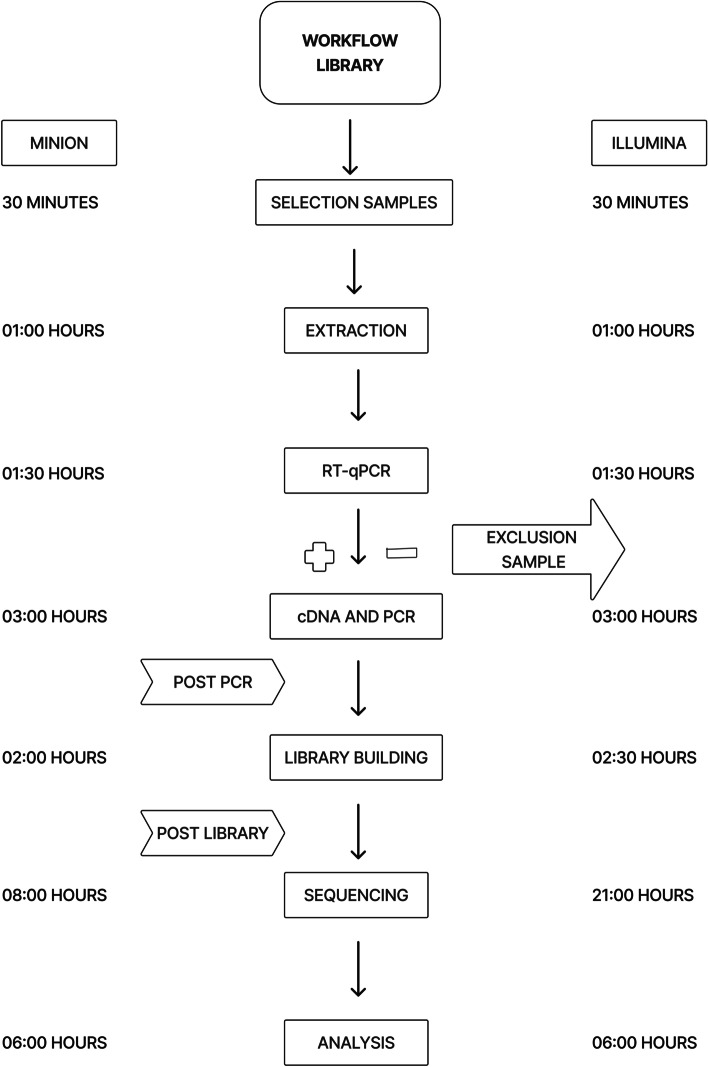MinIon和Illumina技术用于基孔肯雅病毒临床分型的技术比较。
IF 3.5
Q3 Biochemistry, Genetics and Molecular Biology
Journal of Genetic Engineering and Biotechnology
Pub Date : 2023-12-01
DOI:10.1186/s43141-023-00536-3
引用次数: 0
摘要
新一代测序(NGS)技术为几种可能与公共卫生相关的微生物的基因组监测带来了机会。用不同的机制建立不同的方法提供了广泛的选择,考虑到几个方面。考虑到这一点,该研究目前的目的是比较在基孔肯雅热(CHIKV)阳性的临床样本中,牛津纳米孔技术公司的纳米孔和Illumina公司的合成可能影响基因分型的基本基因组测序指标。在研究的指标中,运行时间、读取量和Q评分在Illumina测序中表现得更好,而MinIOn平台表现出更好的响应时间和更大的生成文件多样性。这就是说,除了验证方法上的差异不影响对CHIKV病毒基因型的鉴定之外,还可能确定所研究的指标之间的差异。本文章由计算机程序翻译,如有差异,请以英文原文为准。


Technical comparison of MinIon and Illumina technologies for genotyping Chikungunya virus in clinical samples
New-generation sequencing (NGS) techniques have brought the opportunity for genomic monitoring of several microorganisms potentially relevant to public health. The establishment of different methods with different mechanisms provides a wide choice, taking into account several aspects. With that in mind, the present aim of the study was to compare basic genomic sequencing metrics that could potentially impact genotyping by nanopores from Oxford Nanopore Technologies and by synthesis from Illumina in clinical samples positive for Chikungunya (CHIKV). Among the metrics studied, running time, read production, and Q score were better represented in Illumina sequencing, while the MinIOn platform showed better response time and greater diversity of generated files. That said, it was possible to establish differences between the studied metrics in addition to verifying that the distinctions in the methods did not impact the identification of the CHIKV virus genotype.
求助全文
通过发布文献求助,成功后即可免费获取论文全文。
去求助
来源期刊

Journal of Genetic Engineering and Biotechnology
Biochemistry, Genetics and Molecular Biology-Biotechnology
CiteScore
5.70
自引率
5.70%
发文量
159
审稿时长
16 weeks
期刊介绍:
Journal of genetic engineering and biotechnology is devoted to rapid publication of full-length research papers that leads to significant contribution in advancing knowledge in genetic engineering and biotechnology and provide novel perspectives in this research area. JGEB includes all major themes related to genetic engineering and recombinant DNA. The area of interest of JGEB includes but not restricted to: •Plant genetics •Animal genetics •Bacterial enzymes •Agricultural Biotechnology, •Biochemistry, •Biophysics, •Bioinformatics, •Environmental Biotechnology, •Industrial Biotechnology, •Microbial biotechnology, •Medical Biotechnology, •Bioenergy, Biosafety, •Biosecurity, •Bioethics, •GMOS, •Genomic, •Proteomic JGEB accepts
 求助内容:
求助内容: 应助结果提醒方式:
应助结果提醒方式:


